Xenta MT Ryzen 5 Pro Desktop PC review: Cheap, accessible and surprisingly fast
AMD’s latest APU makes this a versatile option for everyday computing
-
+
Capable everyday performance
-
+
Straightforward, accessible case
-
+
Very cheap
-
+
Decent warranty
-
-
Single-channel memory
-
-
No operating system
-
-
Flimsy panels

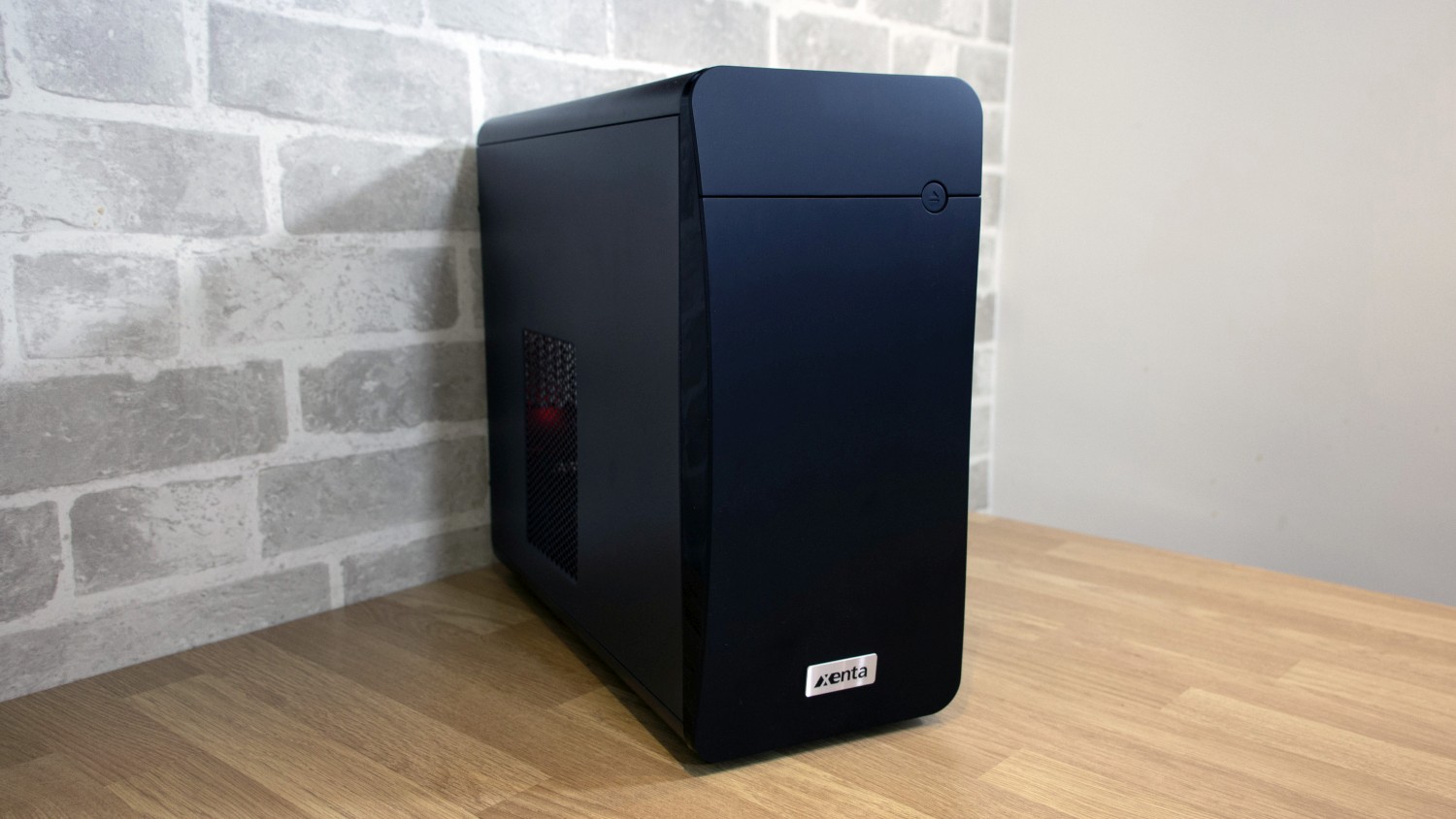
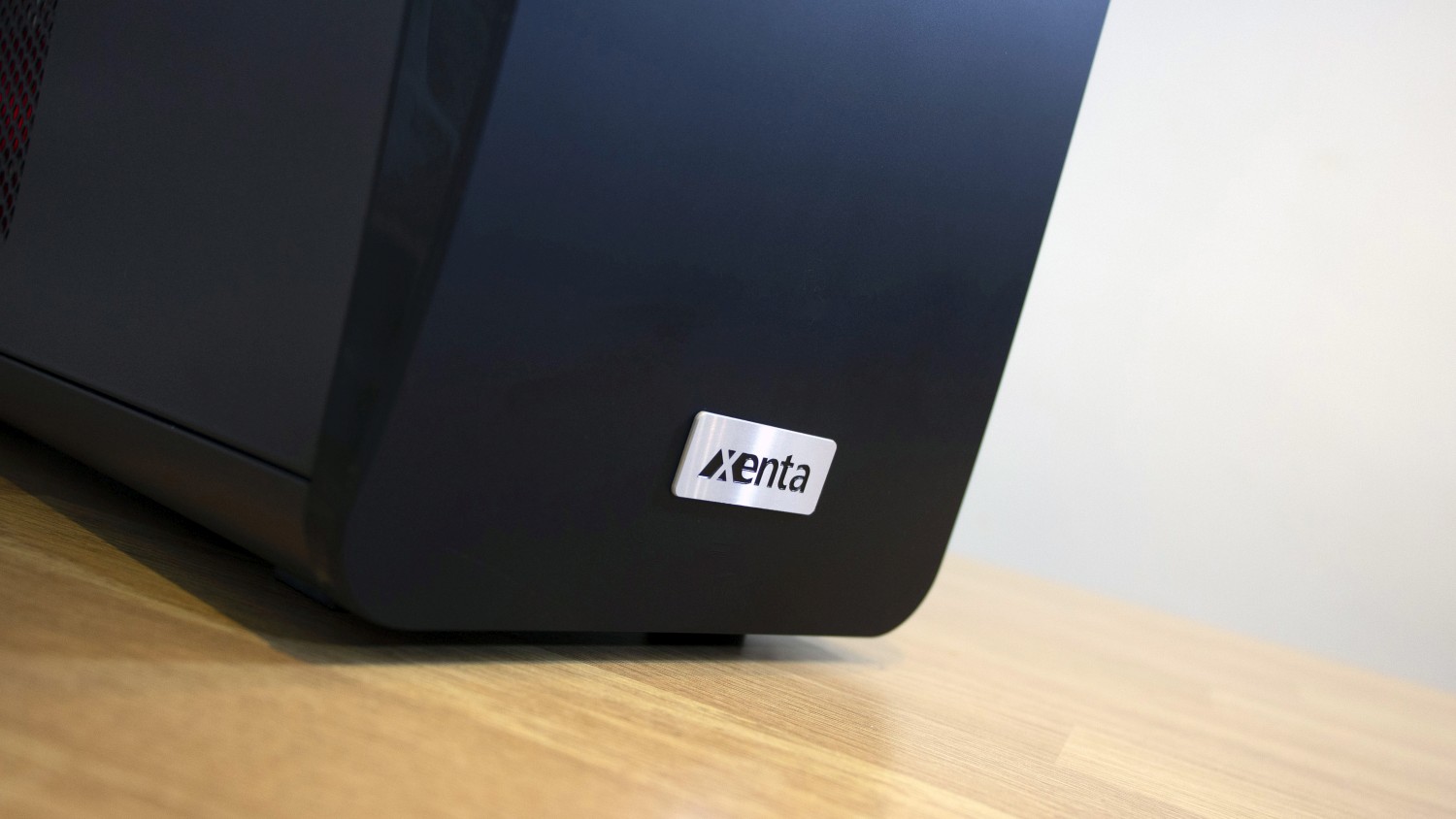
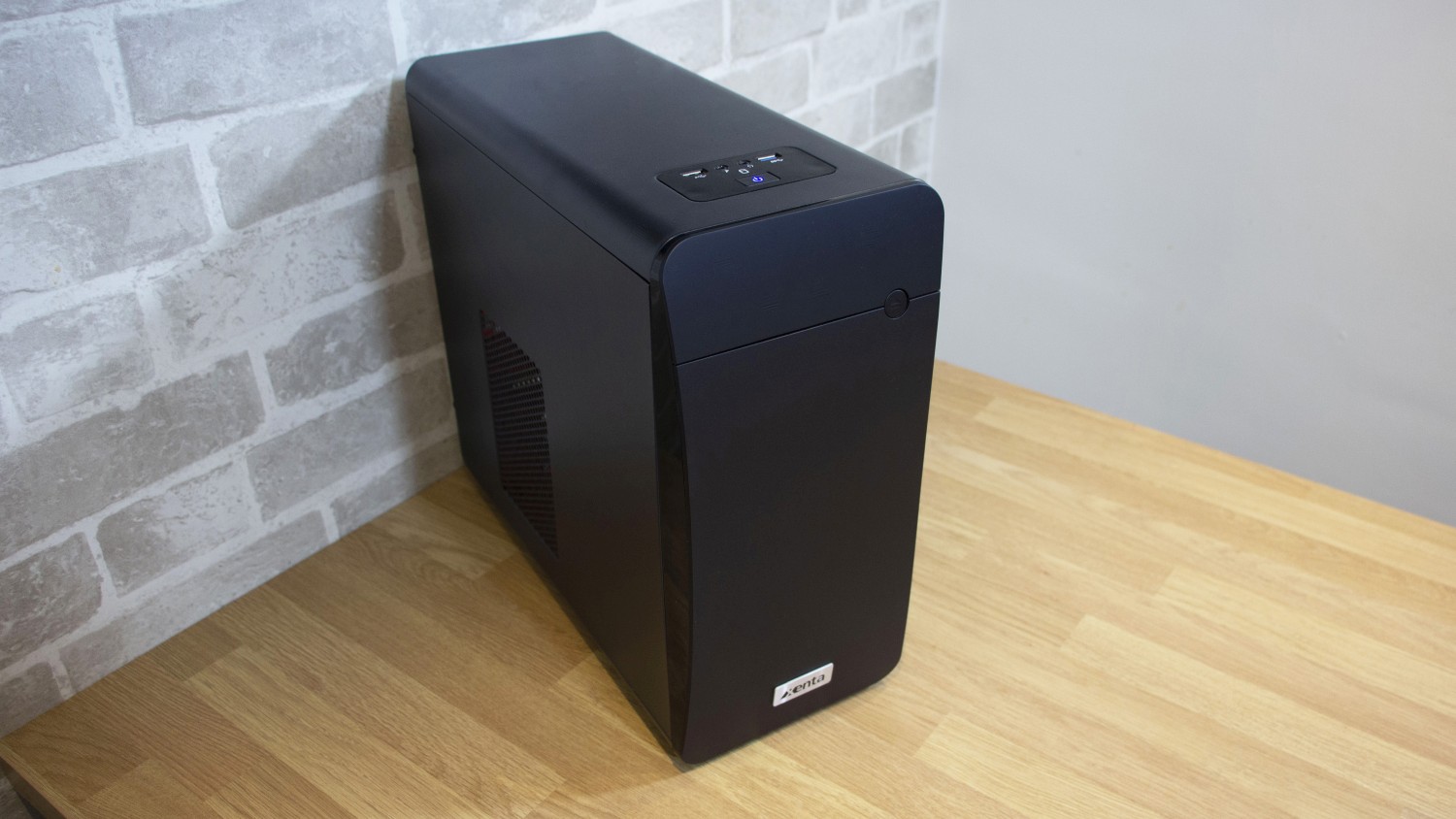
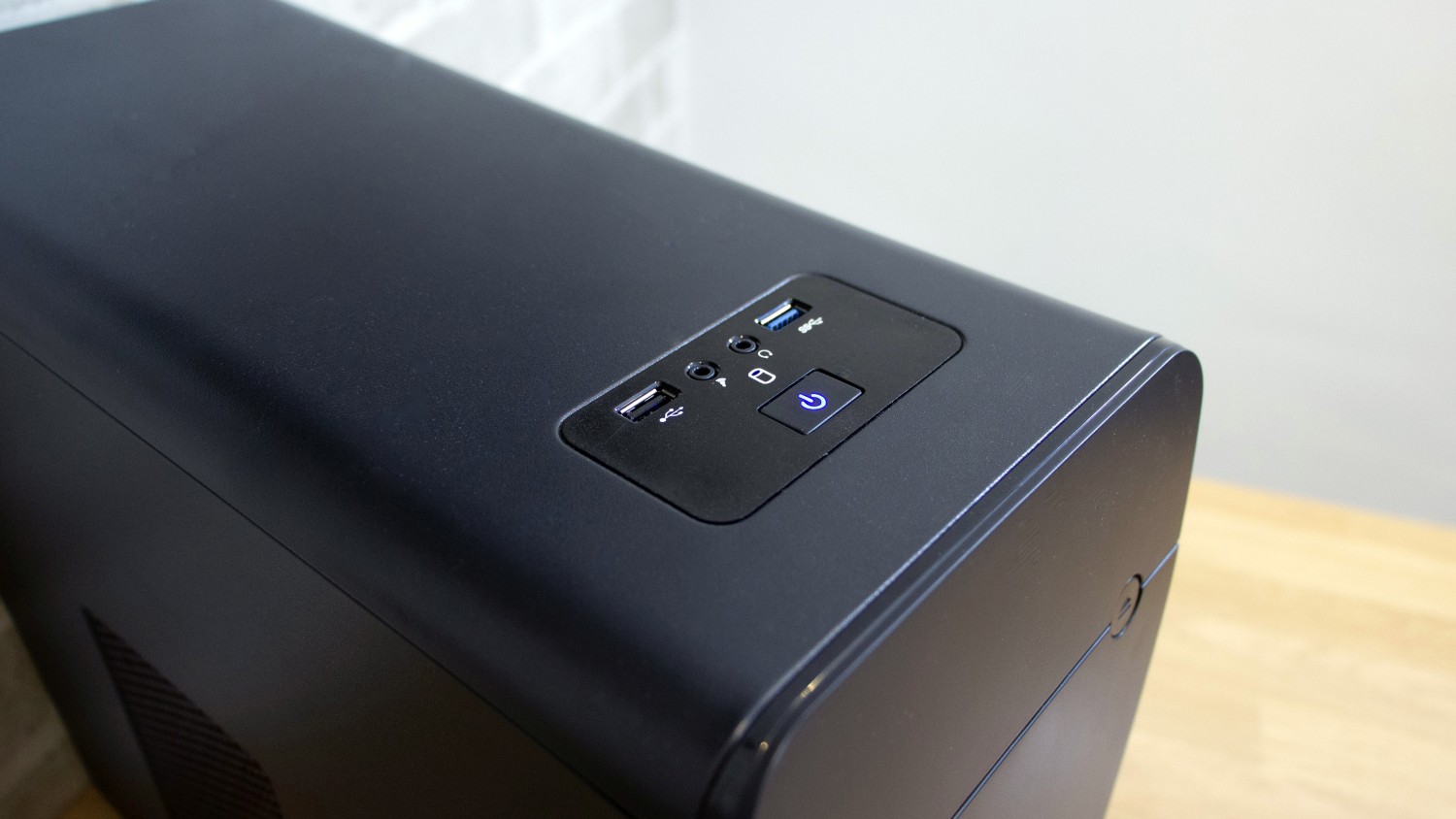
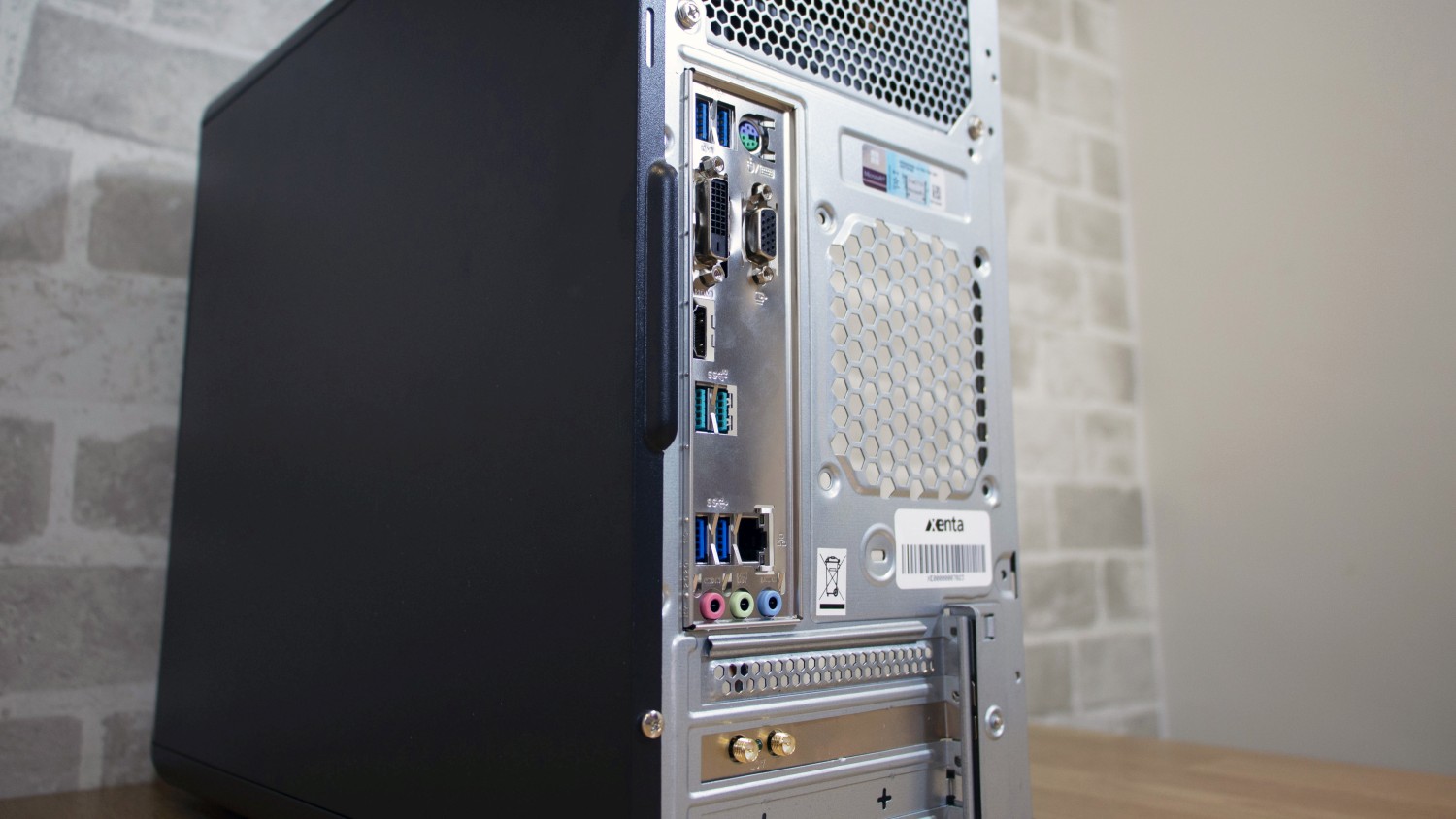
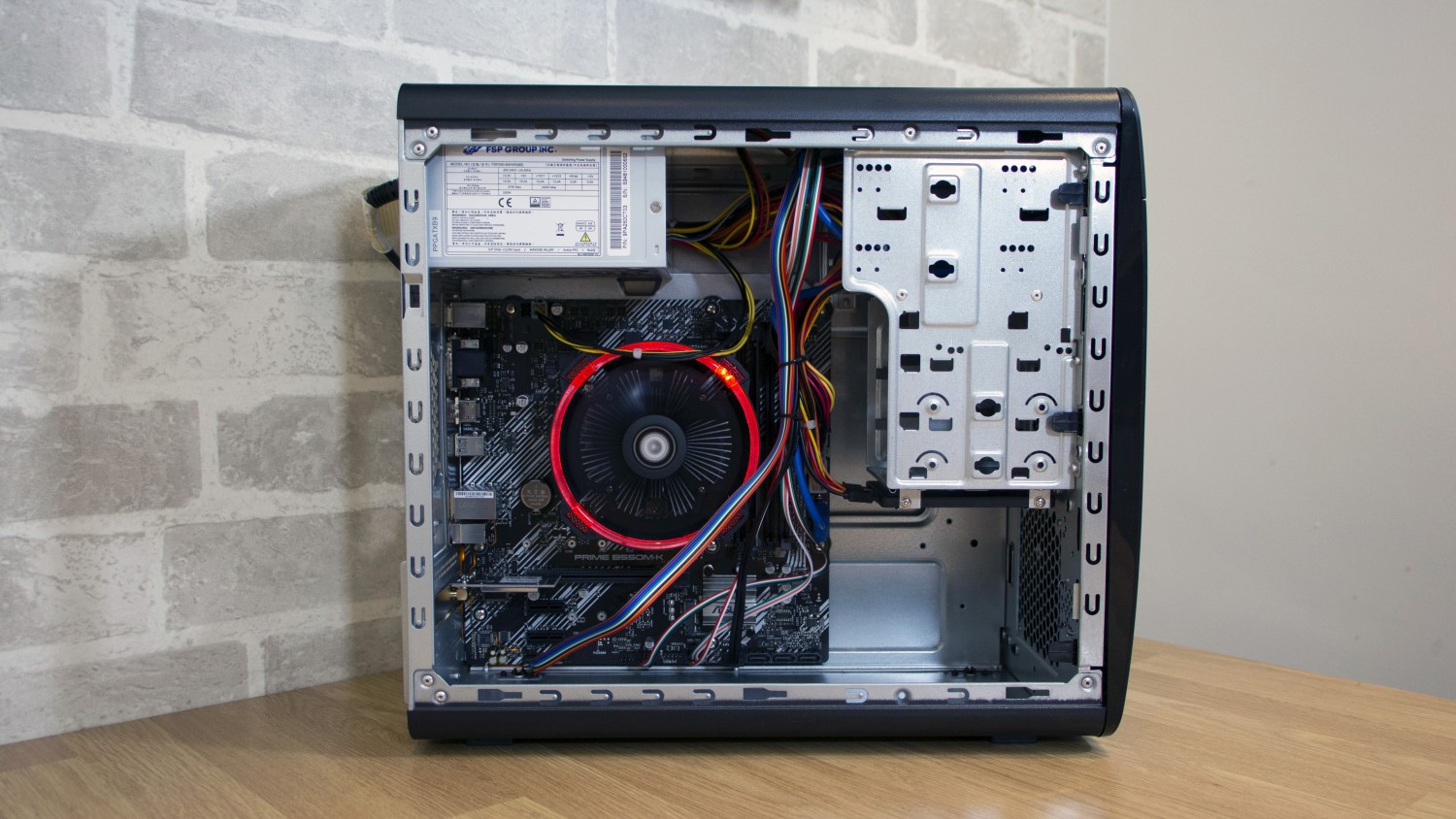
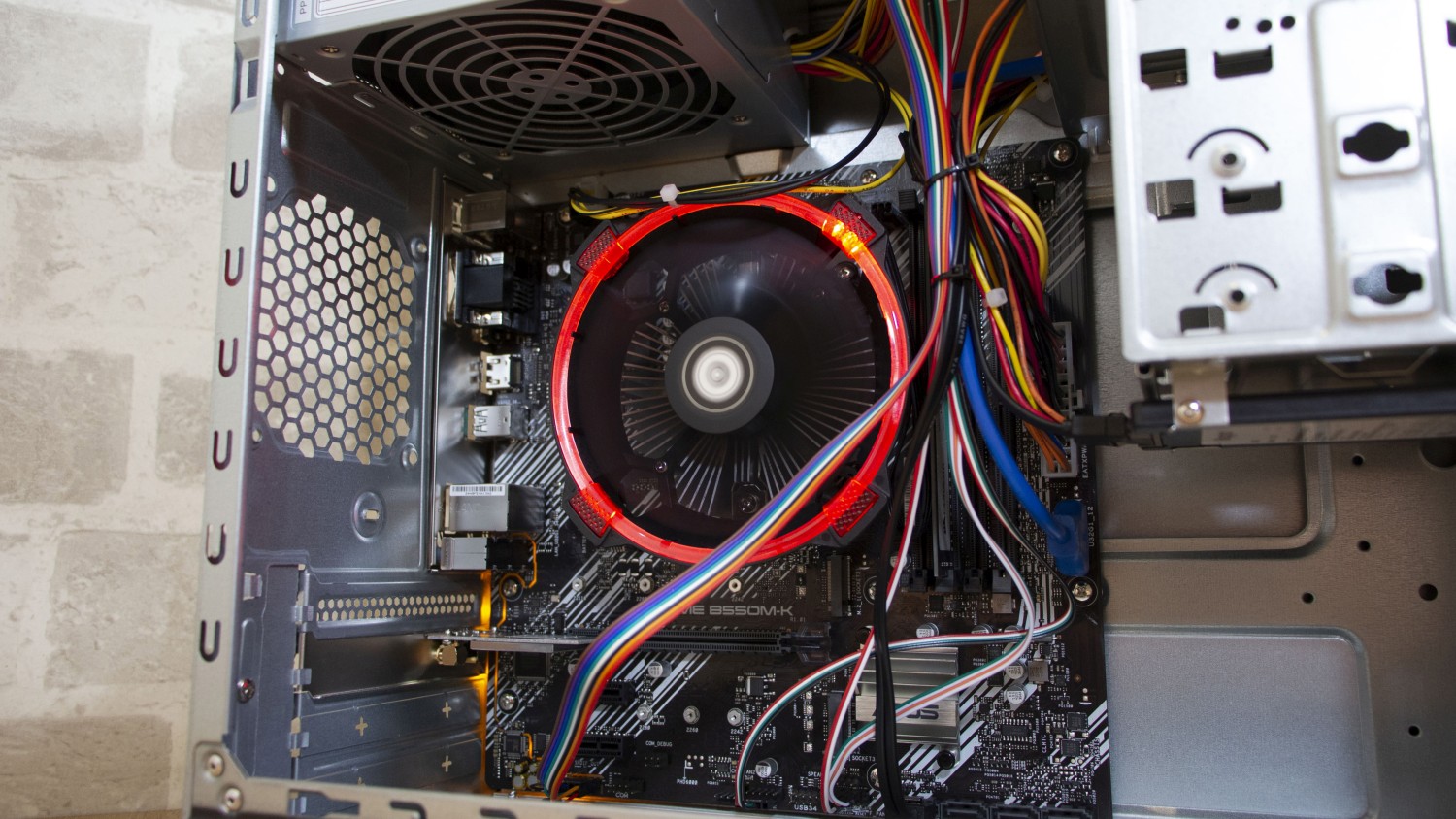
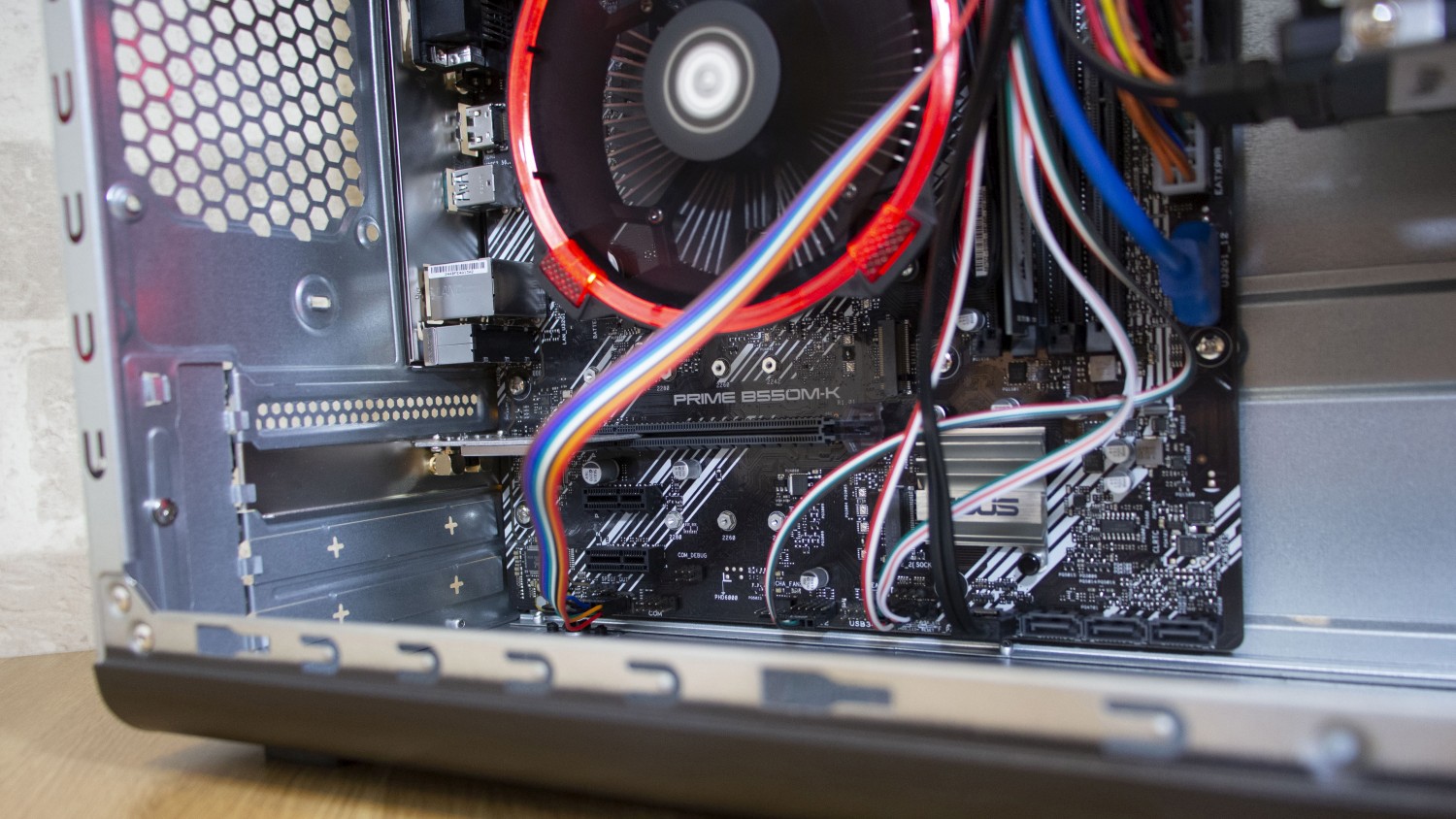
The latest PC from Ebuyer’s business brand is an affordable desktop that deploys a new AMD chip to try and scythe through your day-to-day work tasks with more speed than any Intel-based rival. The new part is installed into a full-size desktop, which helps it stand apart from smaller systems we’ve seen recently, like the Zotac ZBOX VA621 Nano.
This rig only costs £375 exc VAT, so it could be the ideal option if you need a respectable amount of computing power without clearing through your IT budget.
Xenta MT Ryzen 5 Pro Desktop PC review: Design
The lower price does mean that the Xenta doesn’t look like much. The front panel is made of plain metal and plastic, and there aren’t any of the features you’d expect to see on flashier systems.
Build quality is only middling, too – the metal used isn’t particularly thick or sturdy. Those are acceptable compromises given the price, and there are advantages here too – the Xenta’s basic shape makes it easy to stack and store, and it only weighs 4.7kg, which is light for a desktop. The 170mm width, 370mm height and 405mm depth put this PC firmly into mid-tower territory, but the only way you’re getting a desktop PC any smaller is by opting for a tiny chassis without any upgrade options.
The side panel can be removed with two thumbscrews and the front panel comes away with three simple clasps, so getting inside is simple. The case offers a trio of vacant 3.5in hard disk bays and, unusually, a pair of 5.25in slots. If you’re one of the rare users who needs an optical drive, you’ll be ready to hook one up. The inside is unsurprisingly untidy, but the simplicity of this system means every component is easy to access – just be careful of the occasional sharp edge or corner.

Xenta MT Ryzen 5 Pro Desktop PC review: Hardware & Performance
The Xenta uses an AMD Ryzen 5 Pro 4650G processor. These OEM-only parts use AMD’s new Renoir architecture, which is a refresh of the existing Zen 2 design. It’s the first time that Renoir hardware has made it to the desktop, but this architecture has been making waves in the laptop world since early 2020, where it’s delivered Intel-beating speeds and impressive core counts.
This chip is an APU, which means that it includes conventional CPU cores and an integrated graphics chipset. That configuration brings the new APUs in line with Intel’s chips and helps them stand out against AMD’s conventional CPUs, which don’t include graphics.
The 4650G is a Pro chip, which means that it’s got memory encryption and enhanced management options when compared to non-Pro CPUs. The chip included in this Xenta PC is also fully compatible with Microsoft Endpoint Manager, and it includes AMD Secure Technology.
Elsewhere, the 4650G is a six-core chip that supports twelve concurrent threads, and it’s got base and boost speeds of 3.7GHz and 4.2GHz. Its Vega 7 graphics core has seven compute units and runs at 1,900MHz to produce 1,702 GFLOPS of graphical power. Xenta has paired the chip with 8GB of DDR4 memory in single-channel configuration and a 240GB Seagate Maxtor Z1 SSD. It’s pleasing to see an SSD in an affordable system but be aware that large files will fill the drive surprisingly quickly, so you may want to stick a high-capacity drive in one of those vacant 3.5in bays.
In our benchmarks the 4650G returned an overall score of 146, which is superb considering the PC’s low price. It scored well across the board too, with 153 in the single-threaded image-editing test, 148 in the video-encoding benchmark and 142 in the multi-tasking test. It’s a well-rounded result.

We recently reviewed the barebone Zotac ZBOX VA621 Nano, which was powered by a last-gen AMD Ryzen 3 3200U processor, that only scored 45 in the same tests. AMD’s new APU even managed to perform relatively well against far more expensive machines. The Acer ConceptD 500 arrived at £2,667 exc VAT and deployed an eight-core Intel Core i9-9900K, and that machine scored 182 in the image test, 286 in the video-encoding test and 299 overall. It’s no surprise that the Acer has a significant lead, but the Xenta offers at least half the power for a fraction of the price – superb performance.
In Geekbench 5’s single- and multi-core tests the Xenta delivered scores of 1,104 and 4,018. Plenty of other business PCs at this price include chips like the Intel Core i3-9100, which scores around 1,050 and 3,200 points in that test. Spend a little more and you’ll get the Core i5-9400, which scores around 1,070 and 4,600 points.
In 3D Mark’s Sky Diver benchmark the Xenta scored 6741. That’s middling – about as good as the integrated graphics core inside any Intel desktop chip. It’s not going to get you playing any games, but it’ll handle media duties and light photo-editing with ease.
Indeed, the new AMD chip is well set-up to handle day-to-day computing. The solid speeds and six-core design mean you’ve got plenty of ability to run loads of browser tabs and Office applications without any issues. The SSD’s read and write speeds of 501MB/sec and 435MB/sec are fine at this price – far quicker than any hard disk. This PC is also relatively quiet, no matter the task; there is some fan noise present, but it’s modest, and a busy office or even some quiet music will mask it.
The only misstep is the inclusion of single-channel memory. Using that kind of configuration inhibits performance – stepping up to dual-channel would instantly deliver a significant boost to this system, with it easily matching that Core i5 CPU and most likely surpassing it. Similarly, the 2,400MHz speed could be better, especially because AMD chips respond well to faster memory speeds. These issues are not ruinous when it comes to day-to-day computing and they’re not surprising at this price. They’re easily rectified, too.
Xenta MT Ryzen 5 Pro Desktop PC review: Ports and Features

Xenta’s components attach to an Asus Prime B550M-K motherboard. It’s an entry-level board, but it still has decent features – there are two M.2 connectors for faster SSDs, and one of those even supports the super-fast PCI-E 4.0 standard. It has several free SATA ports, three free memory slots and a PCI-E 4.0 x16 socket for adding a graphics card. It uses the AMD AM4 processor socket, so it’s easy to upgrade to better processors – even Ryzen 5000-series chips.
The board supports up to 128GB of memory, and at the rear it serves up two faster USB 3.2 Gen 2 ports, four USB 3.2 Gen 1 connectors and HDMI, DVI-D and D-SUB graphics outputs. It’s only got three audio jacks, though, and the board is also missing several features – there’s no USB Type-C and no second PCI-E x16 socket. There’s a TPM header, but no TPM 2.0 support.
The board has Gigabit Ethernet, and it’s got dual-band 802.11n wireless. That’s fine for everyday use, but it’s disappointing to not have 802.11ac support. There’s no WiFi 6, either, and the top of the chassis has a couple of USB ports but no card reader.
Still, those omissions are acceptable at this price, and most people won’t notice their absence in day-to-day use. The machine is protected by a decent warranty – a three-year labour deal with a year of parts coverage.
There’s one other thing to bear in mind: the Xenta doesn’t include an operating system. Depending on what OS you choose, that’s an expense you’re going to have to include.
Xenta MT Ryzen 5 Pro Desktop PC review: Verdict
There will always be things missing on a PC at this price – you don’t get high-end features, an operating system included or a stylish, sturdy chassis. Temper your expectations, though, and you’ll find an affordable rig that offers easy management and plenty of upgrade paths. The star of the show is AMD’s new Ryzen 5 Pro 4650G, which provides great performance for everyday computing, easily beating Core i3 CPUs.
If you need an everyday office system with good speed, solid upgrade potential and a low price, you could do a lot worse. AMD’s Renoir APUs have been a long time coming, but we’re glad they’re here.
Xenta MT Ryzen 5 Pro Desktop PC specifications
| Processor | 3.7GHz AMD Ryzen 5 Pro 4650G |
| RAM | 8GB 2,400MHz DDR4 |
| Graphics | AMD Radeon RX Vega 7 |
| Storage | 256GB Seagate Maxtor Z1 SSD |
| Operating system | n/a |
| Connectivity | Dual-band 802.11an WiFi, Gigabit Ethernet |
| Ports | 2 x USB 3.2 Gen 2, 5 x USB 3.2 Gen 1, 1 x USB 2.0, 5 x audio, 1 x HDMI, 1 x DVI-D, 1 x D-SUB, 1 x PS/2 |
| Dimensions | 170 x 405 x 370mm (WxDxH) |
| Weight | 4.7kg |
| Warranty | 3yr RTB and labour w/ 1yr parts |
Get the ITPro daily newsletter
Sign up today and you will receive a free copy of our Future Focus 2025 report - the leading guidance on AI, cybersecurity and other IT challenges as per 700+ senior executives
Adam Shepherd has been a technology journalist since 2015, covering everything from cloud storage and security, to smartphones and servers. Over the course of his career, he’s seen the spread of 5G, the growing ubiquity of wireless devices, and the start of the connected revolution. He’s also been to more trade shows and technology conferences than he cares to count.
Adam is an avid follower of the latest hardware innovations, and he is never happier than when tinkering with complex network configurations, or exploring a new Linux distro. He was also previously a co-host on the ITPro Podcast, where he was often found ranting about his love of strange gadgets, his disdain for Windows Mobile, and everything in between.
You can find Adam tweeting about enterprise technology (or more often bad jokes) @AdamShepherUK.
-
 ‘Phishing kits are a force multiplier': Cheap cyber crime kits can be bought on the dark web for less than $25 – and experts warn it’s lowering the barrier of entry for amateur hackers
‘Phishing kits are a force multiplier': Cheap cyber crime kits can be bought on the dark web for less than $25 – and experts warn it’s lowering the barrier of entry for amateur hackersNews Research from NordVPN shows phishing kits are now widely available on the dark web and via messaging apps like Telegram, and are often selling for less than $25.
By Emma Woollacott Published
-
 Redis unveils new tools for developers working on AI applications
Redis unveils new tools for developers working on AI applicationsNews Redis has announced new tools aimed at making it easier for AI developers to build applications and optimize large language model (LLM) outputs.
By Ross Kelly Published
-
 Google layoffs continue with "hundreds" cut from Chrome, Android, and Pixel teams
Google layoffs continue with "hundreds" cut from Chrome, Android, and Pixel teamsNews The tech giant's efficiency drive enters a third year with devices teams the latest target
By Bobby Hellard Published